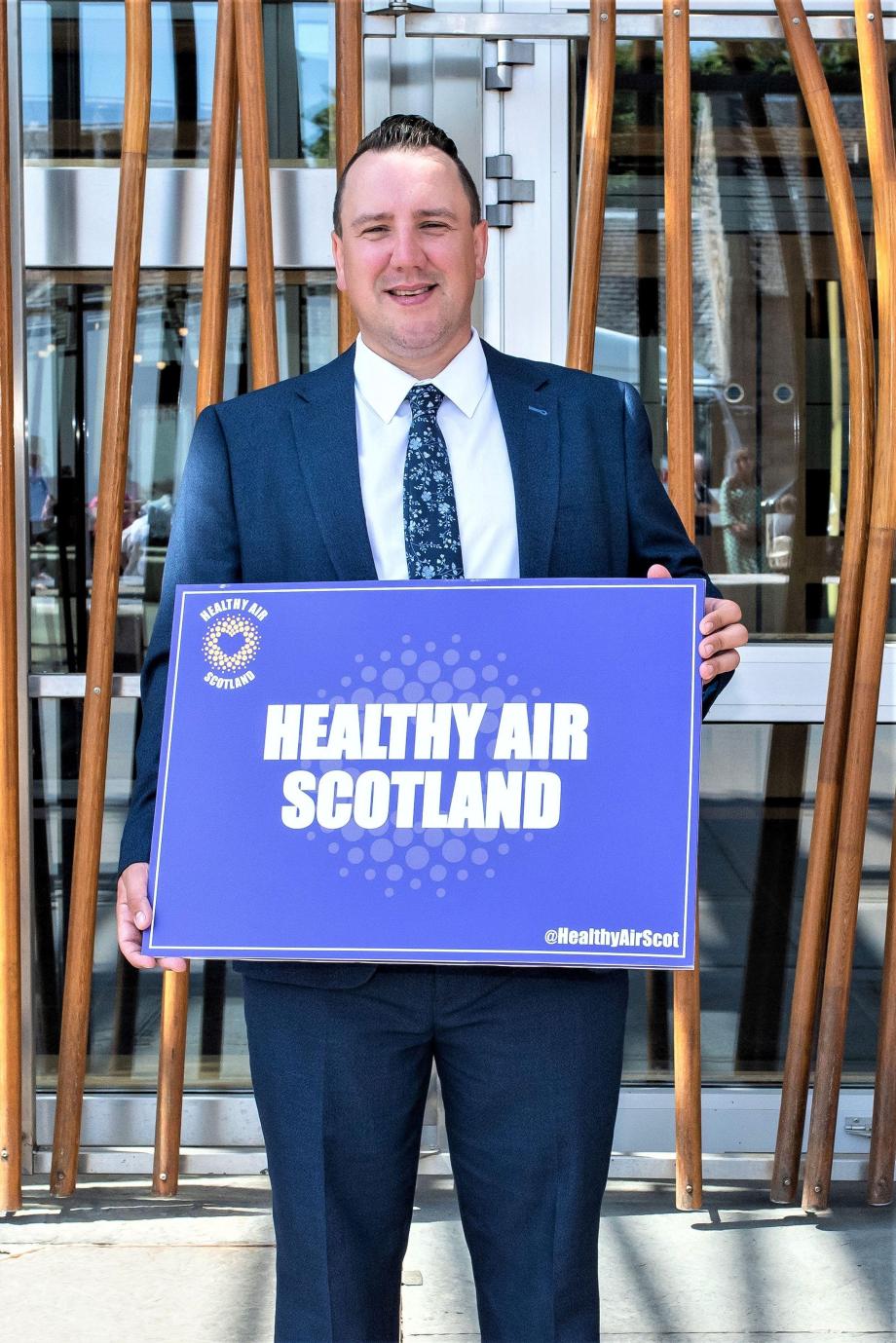Protecting people’s health with cleaner air

By Gareth Brown, Policy & Public Affairs Officer for Asthma + Lung UK Scotland and chair of the Healthy Air Scotland coalition.
The quality of the air we breathe is threatened by harmful levels of air pollution, which poses significant risks to public health. In Scotland alone, up to 2,700 deaths per year are attributed* to long-term exposure to air pollution.1
It is well-established that air pollution damages our hearts and lungs causing various respiratory issues and affecting people with cardiovascular diseases. There is also growing evidence that links air pollution to dementia, type 2 diabetes, and poor mental health.
One of the most vulnerable groups to the harmful effects of air pollution is individuals with pre-existing respiratory conditions, such as asthma and chronic obstructive pulmonary disease (COPD). Respiratory disease affects 1 in 5 people in the UK2 and in Scotland around 368,000 people have asthma.3 For these individuals, exposure to polluted air can aggravate their symptoms and lead to more frequent and severe respiratory attacks.4
The impact on children can be particularly harmful as their developing lungs are more susceptible to damage caused by pollutants resulting in stunted growth of lungs.5 Moreover, research has shown that air pollution can cause new cases of childhood asthma, further increasing the burden on healthcare systems.
In our 2023 Life with a Lung Condition survey of 14,550 people with lung conditions across the UK, 51% of respondents based in Scotland reported that air pollution triggers their lung condition.
The causes of air pollution are complex with numerous sources, but the most common culprit is transport emissions.
In the fight against air pollution, Low Emission Zones (LEZs) have emerged as a powerful tool to help reduce emissions and improve air quality in urban areas. LEZs have worked to reduce air pollution in London and in cities across Europe and were introduced in four of Scotland’s cities in May 2022 – Aberdeen, Dundee, Edinburgh, and Glasgow.
LEZ set an environmental limit on certain city roads, restricting access for the most polluting vehicles to improve air quality. Vehicles must meet the LEZ minimum emission standards as vehicles that meet these standards pollute much less than those that do not. Here are some of the benefits of LEZs:
- Healthier communities: By restricting access to the most polluting vehicles, LEZs lead to a decrease in harmful pollutants and cleaner air. This, in turn, reduces the risk of respiratory diseases or the impact on people with existing health conditions and improves overall public health while enhancing the quality of life for residents.
- Reduced healthcare costs: Air pollution is estimated to cost the Scottish economy over £1.1 billion each year in days lost at work and costs to the NHS.6 As air quality improves and the effects on people with respiratory and other health conditions ease, the financial burden on the NHS and employers is significantly reduced.
- Economic benefits: Improved air quality can help to boost tourism, stimulate local businesses, all of which contribute to economic growth. When people are walking, wheeling or cycling they're more likely to see and visit smaller shops, cafes and restaurants. If air is less polluted then it helps make cities better places to live, work and visit.
- More active and sustainable travel: LEZs promote the use of greener, more sustainable modes of transport, such as walking, wheeling, cycling, and public transport. More people travelling in this way reduces pollution and eases traffic congestion.
- Encourage use of cleaner vehicles: LEZs incentivise vehicle owners and businesses to upgrade their fleets to comply with LEZ emission standards ensuring a reduction in the most polluting vehicles.
To help achieve cleaner air and safeguard people’s respiratory health, it is vital to support the implementation and enforcement of Low Emission Zones. While individual actions, such as reducing personal vehicle use and supporting green initiatives, can make a difference, collective efforts at local community and national levels are essential.
We believe that by advocating for the implementation and expansion of Scotland’s LEZs, we can combat air pollution, and work towards a cleaner, greener future. Together, we can clear the air and protect people’s health.
Asthma + Lung UK Scotland is dedicated to raising awareness about the importance of clean air and advocating for measures to reduce air pollution's adverse effects on respiratory health.
To find out more about the work of Asthma + Lung UK Scotland, go to asthmaandlung.org.uk/Scotland
*It is important to note that attributable deaths are not actual recorded deaths in a particular year; the figure is a statistically derived estimate, intended to convey as faithfully as possible the amount of excess mortality caused by air pollution across the population as a whole. The figure should therefore not be interpreted as the number of individuals in any year where air pollution has made some contribution to earlier death; that number is unknown but is almost certainly larger.
References:
2https://www.england.nhs.uk/ourwork/clinical-policy/respiratory-disease/
3https://www.asthmaandlung.org.uk/scotland
4https://www.asthmaandlung.org.uk/living-with/air-pollution/your-lungs
6https://foe.scot/wp-content/uploads/2017/08/Air-Pollution-in-Scotland-FoES-MSP-briefing_0.pdf
